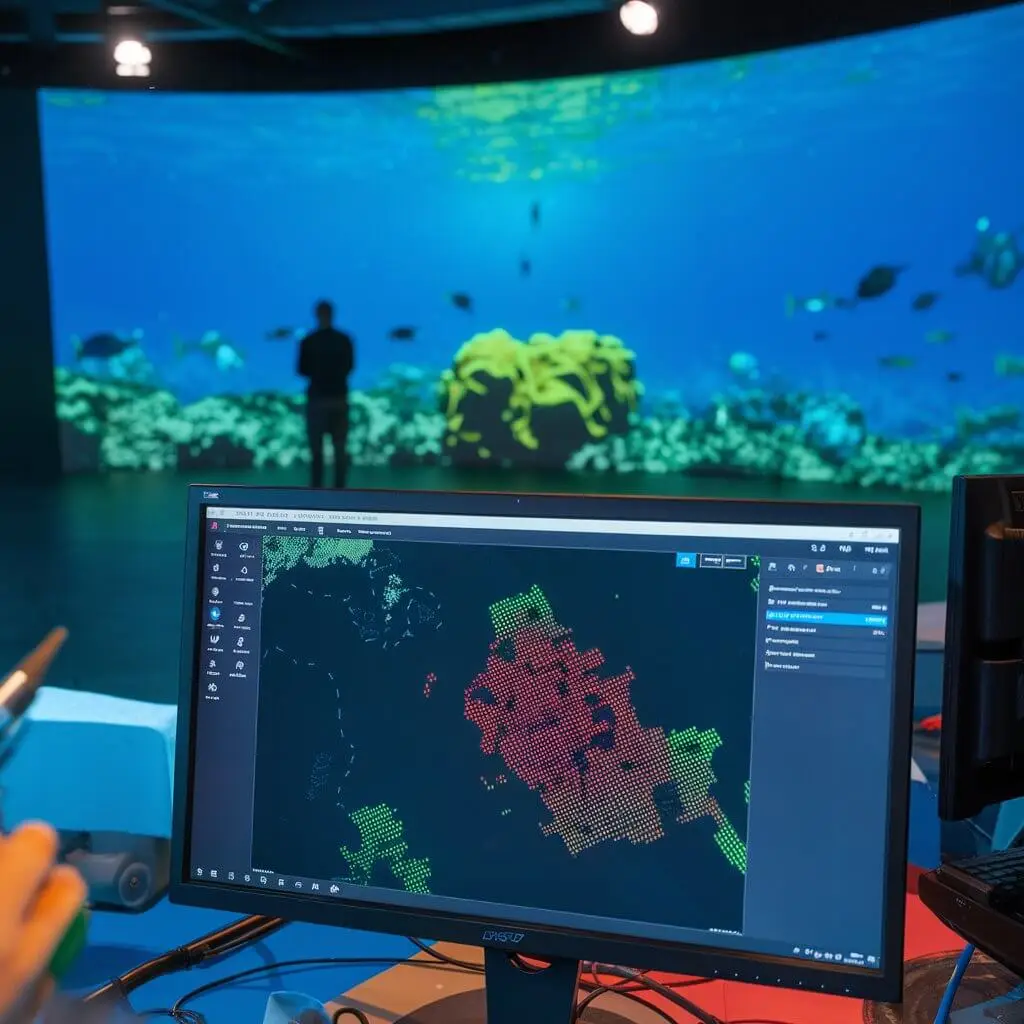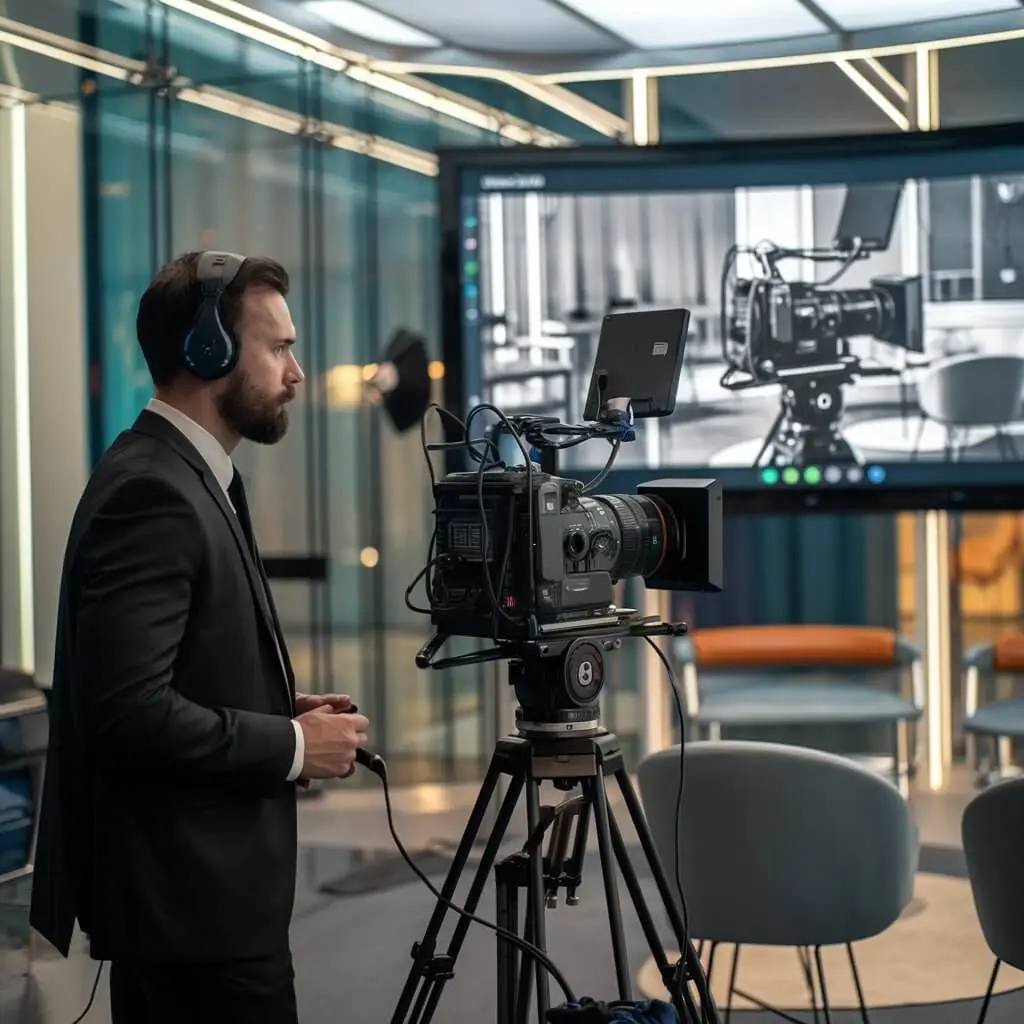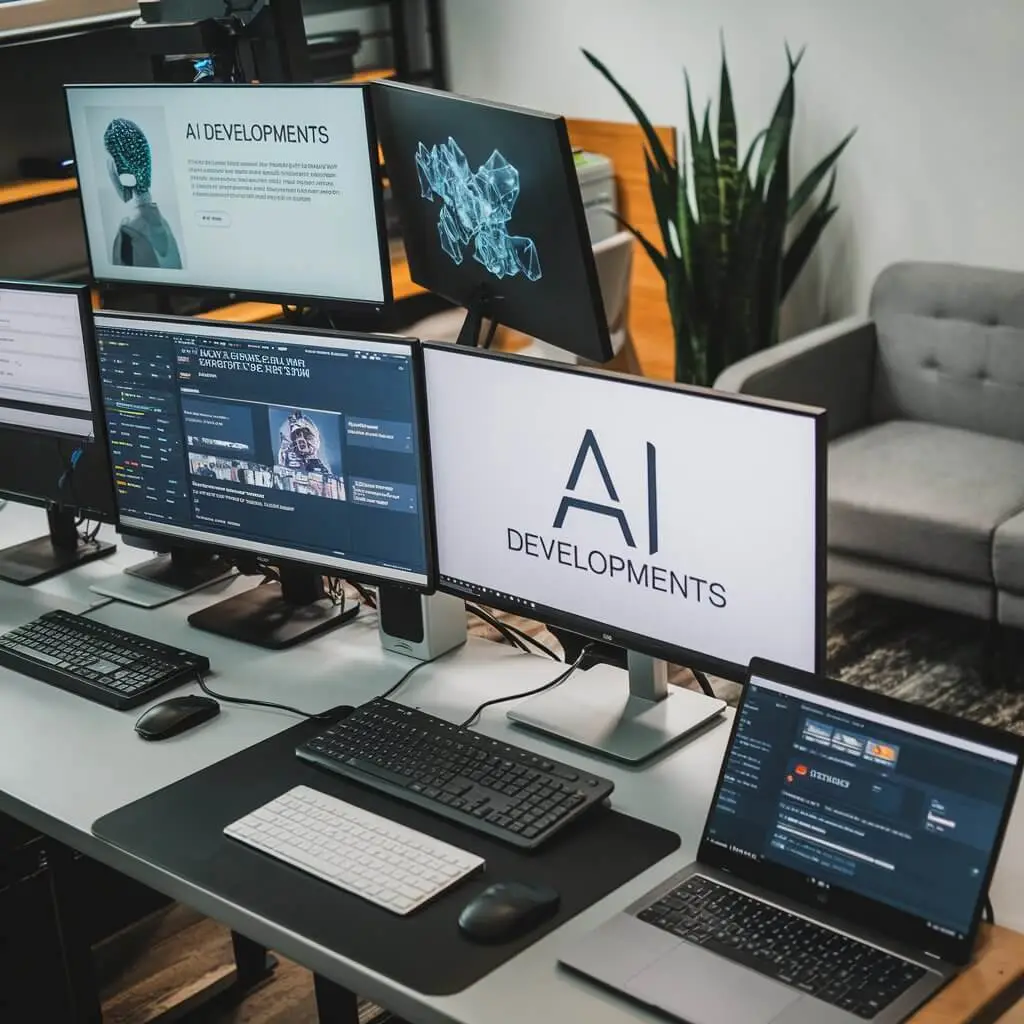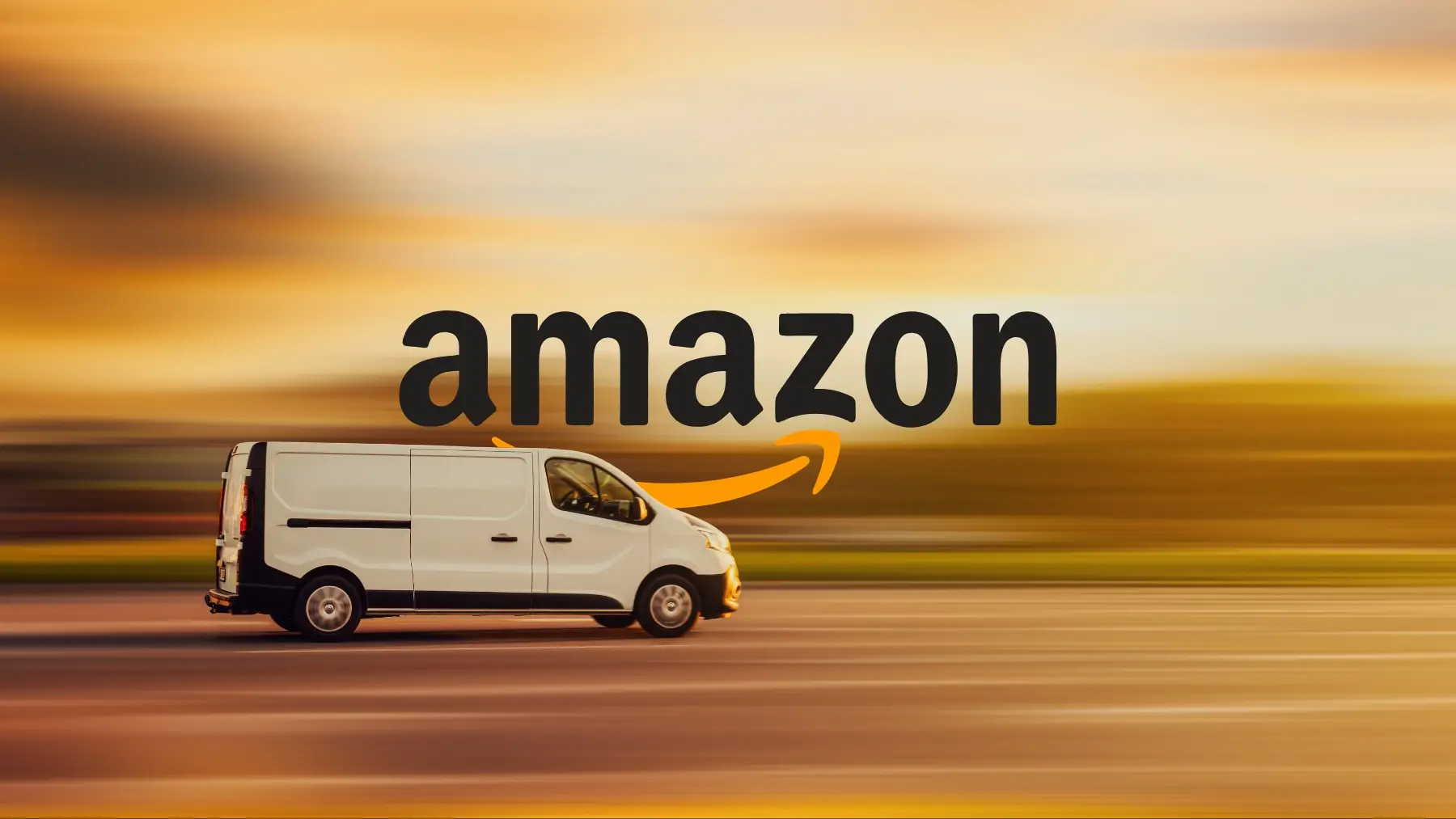From Saving Whales to Revolutionizing Hollywood: How AI Developments Are Driving Innovation in Marine Conservation, Filmmaking, Collaboration Tools, and Hardware
Artificial Intelligence (AI) is no longer confined to tech circles—it’s transforming industries across the globe. From Google’s groundbreaking AI in marine conservation to identify whale vocalizations, to Hollywood embracing AI-driven filmmaking with Lionsgate and Runway, these developments are reshaping the world as we know it. And it doesn’t stop there. AI-driven collaboration tools like Microsoft’s Copilot Pages are enhancing workplace productivity, while AI chip innovations, like Intel’s partnership with AWS, are pushing the boundaries of hardware design. In this article, we’ll explore the latest AI developments across these industries and discuss what the future might hold.
AI in Marine Conservation: Transforming the Oceans
Google Uses AI to Identify Whale Vocalizations: A Game-Changer for Marine Conservation

In a world where AI is transforming industries, Google has ventured into an unexpected but crucial area—marine conservation. The tech giant has developed a bioacoustic AI model that can recognize and classify the vocalizations of eight different whale species, including the mysterious “Biotwang” sound made by Bryde’s whales. This tool could revolutionize how researchers monitor marine populations, particularly in hard-to-reach areas of the ocean.
The Magic Behind AI-Driven Bioacoustics
Google’s bioacoustic model works by analyzing recorded underwater sounds and detecting whale vocalizations. While this might sound simple, identifying the sounds of different whale species is far from easy. Each species has its unique “voice,” and some of these sounds are so rare or complex that even seasoned marine biologists struggle to classify them. By training AI to do this work, Google has created a tool that is not only efficient but can also handle the vast amount of audio data collected in the wild. This could greatly enhance “passive acoustic monitoring” — a non-invasive way to track marine populations.
Why It Matters for Marine Life
The oceans are vast, and tracking marine life, particularly whales, is a monumental challenge. Many whale species are endangered, and understanding their population sizes, migration patterns, and breeding behaviors is critical for conservation efforts. By using this AI tool, scientists can better monitor these species in remote areas, where human-led tracking might be too expensive or technically challenging. This development could be particularly beneficial for saving vulnerable species, as it allows researchers to detect patterns and behaviors that might otherwise go unnoticed.
The Future of AI in Conservation
Google’s move to develop AI for marine conservation demonstrates how technology can be leveraged for environmental causes. As AI becomes more sophisticated, we could see similar applications across different areas of wildlife monitoring—from identifying bird songs in forests to tracking elusive mammals in dense jungles. The potential for AI to assist in protecting biodiversity is immense, and Google’s contribution in this space could pave the way for further innovations.
In a world where marine life faces growing threats from climate change and human activity, Google’s AI model offers a glimmer of hope. By equipping researchers with powerful tools, we might just have a better chance of safeguarding the oceans for future generations.
Source: https://research.google/blog/whistles-songs-boings-and-biotwangs-recognizing-whale-vocalizations-with-ai/?
Hollywood’s AI Revolution: The Future of Filmmaking
Lionsgate Partners with Runway for AI-Powered Film Production: The Future of Hollywood?

Lionsgate, one of Hollywood’s major film studios, has partnered with Runway, a cutting-edge AI tool developer as a major step in AI film making , to introduce a groundbreaking AI model designed specifically for film production. This collaboration taps into Lionsgate’s vast library of film and TV content, aiming to revolutionize the creative process in both pre- and post-production using AI-powered tools. With this partnership, Hollywood could be on the brink of an AI-driven transformation in filmmaking.
What Does This Partnership Bring to the Table?
The collaboration between Lionsgate and Runway is set to change the way films are made. Runway’s AI models will assist filmmakers in generating cinematic content, streamlining the production process, and enhancing creativity. Tasks that once required a significant amount of manual effort—such as editing, scene creation, and even certain aspects of scriptwriting—can now be optimized using AI tools. This not only reduces production time but also opens up creative possibilities that were previously unimaginable.
The integration of AI into filmmaking also means that directors, editors, and writers will have powerful new tools at their disposal. For instance, an AI could suggest alternate plot lines, help generate realistic visual effects, or even create entire scenes from scratch. While humans will still be at the helm of the creative process, AI will act as a powerful co-pilot, offering new ways to bring stories to life.
How Could This Change Hollywood?
Hollywood has always been quick to embrace technology, from the early days of special effects to the rise of CGI. But the introduction of AI into film production represents a more fundamental shift. This technology could lower costs, reduce turnaround times, and democratize filmmaking by making advanced production tools more accessible. Independent filmmakers, who might lack the massive budgets of big studios, could also benefit from these AI-powered tools, leveling the playing field.
Moreover, this partnership between Lionsgate and Runway may set a trend across the film industry. Other studios may soon follow suit, incorporating AI into their workflows, which could lead to faster releases, more content, and new forms of storytelling. We may even see AI-generated films or TV shows in the not-too-distant future.
AI: The New Frontier of Creativity
What makes this partnership exciting is not just the efficiency gains but also the creative potential that AI offers. By analyzing vast amounts of data from previous films and shows, AI models can inspire new ideas, suggest innovative visual styles, or predict trends that resonate with audiences. This is not about replacing human creativity but enhancing it. Filmmakers will still be the ultimate storytellers, but AI will provide them with a broader palette of tools to paint their vision.
As Hollywood enters this new AI-driven era, the collaboration between Lionsgate and Runway could be remembered as a pivotal moment in the evolution of the entertainment industry. The future of film production looks more dynamic and innovative than ever before, thanks to the power of AI.
Related post: https://srinivaskumar.com/will-ai-ethics-survive-openai-profit-data-privacy/
Source: https://www.theguardian.com/film/2024/sep/18/lionsgate-ai?
Collaboration Redefined: AI-Driven Tools Like Microsoft’s Copilot Pages
Microsoft Introduces ‘Copilot Pages’: The Next Big Leap in AI Collaboration
Microsoft is making strides in the AI space with its latest innovation: “Copilot Pages.” This new feature, integrated into Microsoft 365, promises to transform how teams collaborate using AI-generated content. By turning AI-generated text into editable, interactive pages, Copilot Pages brings a fresh approach to real-time, team-driven workflows.
What Are Copilot Pages?
In essence, Copilot Pages allow teams to work together more efficiently by offering a collaborative workspace where AI-generated content can be fine-tuned by human users. The key here is that the AI provides a starting point—drafts, ideas, or even entire documents—and teams can then jump in to adjust, edit, and expand on the material in real time. This eliminates the bottlenecks of waiting for one person to draft content before sharing it with others. Instead, teams can now work on dynamic pages simultaneously, making AI collaboration feel more like a shared experience.
One of the standout features of Copilot Pages is the ability to take AI suggestions and transform them into living documents that can evolve with input from multiple collaborators. This has the potential to significantly reduce the time it takes to go from ideation to final product, which is especially useful for fast-paced industries where time is of the essence.
A Paradigm Shift in Collaboration
While AI has already been used in various individual productivity tools, Microsoft’s Copilot Pages takes it a step further by focusing on team collaboration. It shifts the paradigm from a solitary experience of using AI for personal productivity to a more communal one, where entire teams can benefit from the AI’s capabilities. Whether it’s brainstorming ideas, drafting documents, or even creating project plans, Copilot Pages could redefine what it means to work together in an AI-augmented workspace.
Imagine the possibilities: a marketing team drafting campaign plans where the AI suggests taglines and copy, while team members simultaneously refine and adapt the content to suit their vision. Or a research team drafting a report, with the AI providing summaries and analyses of data while team members verify, edit, and expand on the insights. The potential applications are vast.
The Future of AI-Driven Workspaces
Microsoft’s introduction of Copilot Pages could lead to a more seamless integration of AI in business environments. As more companies adopt these AI-driven collaborative tools, the boundaries between human and AI roles in the workplace will blur. However, this doesn’t mean AI will replace human creativity or decision-making. Instead, it offers teams the chance to harness AI’s strengths—speed, data analysis, and initial drafting—while maintaining human oversight and creativity.
What sets Copilot Pages apart is its ability to foster a more interactive, engaging workspace. This is the future of work: a collaborative environment where AI supports and enhances team efforts, rather than functioning as a separate tool for individual tasks.
By bringing AI collaboration into the fold, Microsoft is opening the door for a more productive, efficient, and innovative workplace. Copilot Pages may just be the catalyst that businesses need to take their teamwork to the next level.
Source: https://www.theverge.com/2024/9/16/24246010/microsoft-copilot-pages-multiplayer-ai-business?
Related post: https://srinivaskumar.com/ai-news-roundup-key-developments-and-tools-in-ai-for-september-2024/
AI Chip Innovations: Intel’s Partnership with AWS
Intel Secures Amazon as a Major Client for Custom AI Chips: A Turning Point for the Chipmaker?
In a significant move for the AI hardware space, Intel has struck a multi-year, multibillion-dollar deal with Amazon Web Services (AWS) to design and manufacture custom AI chips. This partnership gives Intel a much-needed boost in the highly competitive AI chip market, where companies like NVIDIA and AMD have been dominating in recent years.
What Does This Deal Mean for Intel and AWS?
For Intel, this deal could be a turning point. The company has been striving to regain its footing in the semiconductor industry, particularly in the AI sector, where competitors have often outpaced it with more advanced technologies. The deal with AWS means that Intel will be responsible for creating high-performance, custom AI chips using its most advanced manufacturing process, the 18A node.
Intel’s 18A node is set to deliver substantial improvements in energy efficiency and computational power, which are critical in handling the growing demands of AI workloads. With this partnership, Intel is not just producing chips for any client but for AWS, one of the largest cloud computing service providers in the world. This could be the leverage Intel needs to make a stronger case for its capabilities in the AI chip market.
For AWS, having custom AI chips means gaining more control over the hardware it uses to run its massive cloud infrastructure. Custom chips tailored to their specific needs can improve the performance of AI applications, reduce costs, and provide AWS with a competitive edge in the cloud computing race. As AI-driven services continue to expand, having specialized hardware to support these operations becomes increasingly critical.
A Boon for Cloud-Based AI Innovation
AWS’s decision to partner with Intel is a clear indication that cloud providers are increasingly relying on customized hardware to meet the ever-growing demands of AI and machine learning applications. Cloud services are at the core of modern AI development, as they provide the massive computational power needed to train and deploy AI models at scale.
This deal strengthens AWS’s ability to innovate in the AI space. By working with Intel to develop chips optimized for cloud-based AI workloads, AWS can offer more robust AI capabilities to its clients, further cementing its leadership in the cloud computing market. This also positions AWS to handle the increasing demand for AI services from industries such as healthcare, finance, and autonomous vehicles.
Intel’s Comeback Strategy
For Intel, this partnership represents a significant victory in its strategy to rejuvenate its foundry business. Intel has faced criticism in recent years for falling behind in the race to develop cutting-edge chips, particularly as NVIDIA and AMD have surged ahead in AI chip design. However, by securing a major client like AWS, Intel demonstrates that it is still a key player in the semiconductor industry and can compete at the highest levels.
The AI chip market is expected to grow exponentially in the coming years, driven by advancements in AI technologies and increasing demand for cloud services. If Intel can capitalize on this partnership and deliver state-of-the-art chips that meet AWS’s needs, it could regain some of the market share it has lost in recent years.
What’s Next for AI Hardware?
This deal between Intel and AWS highlights the growing importance of hardware customization in AI development. As AI models become more complex and require greater computational power, the need for specialized chips that can handle these demands will only increase. We may soon see more partnerships between tech giants and chip manufacturers, as companies seek to tailor their hardware to their unique AI workloads.
Intel’s success in this venture could also spark further innovation in the AI hardware space, pushing competitors to develop even more advanced technologies. The future of AI is heavily dependent on the capabilities of the hardware that supports it, and with this deal, Intel has placed itself back in the conversation as a key player in this high-stakes game.
Source: https://finance.yahoo.com/news/intel-custom-ai-chip-amazon-201011601.html?
Related new: https://srinivaskumar.com/ai-news-2024-supercomputers-healthcare/
WhatsApp’s New AI Voice Feature: Chatting with Celebrities Made Possible
WhatsApp, a messaging giant owned by Meta, is on the verge of launching a new feature that promises to add an exciting twist to how users interact with AI chatbots. The new AI voice feature will allow users to communicate with its Meta AI chatbot using the voices of well-known public figures, including celebrities and influencers. This bold move aims to create a more personalized and immersive chat experience by offering users various voice options, complete with different accents and tonalities.
Why Is This Feature Exciting?
Imagine having a conversation with your favorite celebrity—or at least, their voice. WhatsApp’s new AI voice feature makes this possible by synthesizing the voices of well-known personalities and integrating them into the AI chatbot. Users can select their preferred voice, which adds an element of fun and personalization to the typically mundane chatbot interaction. This could appeal particularly to younger audiences who are more engaged with social media influencers and celebrity culture.
But it’s not just about novelty. By offering multiple voice options, WhatsApp is also making its AI chatbot more relatable and engaging. Voice-based interactions can feel more personal than text-based ones, which could lead to increased user retention and longer, more meaningful conversations with the AI. Whether users are asking for restaurant recommendations, checking the weather, or simply having fun, the voice options bring a fresh layer of interaction that could change how we perceive chatbots.
Personalized AI Interaction: The Future of User Engagement?
This move by WhatsApp highlights the growing importance of personalization in AI-driven experiences. As AI becomes more embedded in our daily lives, users expect more than just basic functionality—they want experiences that feel tailored to their preferences. By offering celebrity voices and customizable accents, WhatsApp is tapping into this trend, making interactions feel less robotic and more human.
Moreover, this feature could signal a broader shift in how voice-based AI is used. Instead of simply issuing commands to a virtual assistant, users can now “chat” with an AI that sounds familiar, warm, and approachable. This could redefine how we use AI chatbots in everything from customer service to entertainment, as more companies begin to realize the potential of voice personalization to create stronger user connections.
Celebrity Voices: A Game-Changer for WhatsApp?
By incorporating celebrity voices into its AI chatbot, WhatsApp is differentiating itself from competitors like Telegram and Signal. In the fiercely competitive world of messaging apps, features like this can help boost user engagement and create a unique selling point that attracts a broader audience. It’s not just about fun—it’s also about standing out in a crowded market.
In addition, the feature may also pave the way for more creative AI-driven interactions in other Meta-owned platforms like Instagram and Facebook Messenger. Imagine using a celebrity voice to narrate your Instagram stories or to interact with your followers on Facebook. The possibilities for integration across Meta’s ecosystem are endless, and this could be the start of something much bigger.
Will AI Voice Interactions Become the New Norm?
As AI technology continues to evolve, voice-based interactions will likely become a standard feature across many platforms. WhatsApp’s new feature is just one example of how companies are finding innovative ways to make AI more engaging and personalized. In a world where voice assistants like Alexa and Siri have already become household names, adding celebrity voices to the mix could make everyday interactions feel more exciting and dynamic.
This is just the beginning. As more companies explore the potential of AI voice features, we might soon see a future where interacting with AI in familiar, human-like voices becomes the norm. For now, WhatsApp’s latest offering shows that the future of messaging is not just about text—it’s about voice, personality, and connection.
UN Warns of AI Monopoly: The Risk of a Few Multinationals Dominating the Future of AI
In a recent report, the United Nations has raised concerns that the rapidly growing field of artificial intelligence (AI) could be monopolized by a small number of multinational corporations. This warning highlights the potential for significant economic and social disparities if AI technologies remain concentrated in the hands of just a few powerful companies. According to the UN, without global regulations, AI development could exacerbate existing inequalities, leaving many countries and businesses at a disadvantage.
Why Is This a Major Concern?
AI is quickly becoming a central technology that will shape the future of industries, economies, and societies. From healthcare and education to transportation and entertainment, AI holds the potential to transform nearly every sector. However, if only a handful of large companies control the development, deployment, and benefits of AI, it could lead to a global imbalance in power and opportunity.
The UN’s report emphasizes that monopolization of AI could stifle innovation, as smaller companies and countries without access to these advanced technologies may be unable to compete. This could lead to a scenario where technological advancements, and the benefits they bring, are enjoyed only by wealthy nations and corporations, widening the gap between the tech haves and have-nots.
The Role of Multinationals in Shaping AI
Currently, the AI landscape is dominated by a few key players, most notably tech giants like Google, Microsoft, Amazon, and Meta. These companies have vast resources to invest in AI research and development, which allows them to stay ahead of the curve. They also own enormous datasets and have access to the computing power needed to train large AI models—assets that smaller companies and developing countries often lack.
This concentration of AI power raises important questions: Who will benefit from the future of AI? Will the development of AI technologies be inclusive, or will they reinforce existing global inequalities?
A Call for Global AI Governance
In response to these concerns, the UN is calling for international regulations to ensure that AI benefits are shared more equitably across the world. The report suggests that governments need to play a more active role in regulating AI development, ensuring that it is used ethically and for the common good. This could include implementing rules around data sharing, fair competition, and access to AI technologies for underdeveloped nations.
Additionally, the UN emphasizes the importance of transparency in AI development. Many advanced AI models are often created behind closed doors within multinational corporations, which makes it difficult to hold these companies accountable. By introducing more global oversight and collaboration, the UN hopes to prevent AI from becoming a tool that exclusively serves the interests of a few powerful entities.
What’s Next for Global AI Development?
The UN’s report comes at a time when many countries are still figuring out how to regulate AI. Some nations, such as the European Union, are already working on frameworks to ensure AI is developed in a way that protects privacy, human rights, and fairness. However, there is still a long way to go in creating global standards that can be adopted across borders.
The warning from the UN underscores the importance of taking action sooner rather than later. If the AI market continues to be dominated by a few companies, the world could face an unbalanced future where technological advancements only benefit a small percentage of the global population. By advocating for international AI governance, the UN aims to create a more inclusive and fair technological future.
The Road Ahead: Can We Democratize AI?
The potential for AI to improve lives around the world is immense—but only if its benefits are shared equitably. The UN’s call for regulations is a reminder that we need to act now to ensure AI is not just a tool for the powerful but a technology that can uplift everyone. Creating global rules around AI will not be easy, especially when powerful corporations stand to lose from such regulations. However, the future of AI should be one where innovation is accessible, inclusive, and beneficial for all.
Source: https://www.cio.com/article/3531501/ai-could-be-taken-over-by-a-few-multinationals-warns-un.html?
Related news: https://srinivaskumar.com/this-week-in-ai-news/
YouTube Shorts Integrates Google’s Veo AI: A New Era of Video Creation
YouTube is stepping up its game in the short-form video space with the integration of Google’s Veo AI video model into YouTube Shorts. This cutting-edge AI technology is designed to enhance the creative process for content creators by offering intelligent assistance in video generation and editing. The goal is simple: make video creation more accessible and efficient for all users, regardless of their technical skills.
What Is Veo AI, and How Does It Work?
Veo AI is Google’s advanced video model that leverages machine learning to assist in content creation. With this integration into YouTube Shorts, the AI will help users generate and edit short-form videos faster by offering suggestions for cuts, transitions, and even creative effects. Think of it as having a virtual assistant that understands the nuances of video editing and can offer real-time recommendations to elevate your content.
For creators, this could be a game-changer. Editing videos can be a time-consuming process, especially for those who are new to video production or don’t have access to professional tools. By using Veo AI, YouTube Shorts aims to simplify the process, allowing creators to focus more on their ideas and less on the technical aspects of editing.
Democratizing Video Creation
One of the most exciting aspects of this integration is how it democratizes the process of video creation. Traditionally, advanced editing tools were either costly or required a steep learning curve. With Veo AI, these tools become available to everyone, regardless of their skill level. Now, someone with zero experience in video editing can still produce professional-looking content with the help of AI.
This also means that more creators can participate in the content economy. As platforms like TikTok, Instagram Reels, and YouTube Shorts compete for the attention of creators and viewers, features like this give YouTube an edge by lowering the barrier to entry for new creators. More people can now share their stories, ideas, and creativity with the world without the need for expensive equipment or software.
YouTube’s Strategy in the Short-Form Video War
With the rise of TikTok and Instagram Reels, YouTube Shorts has entered a fiercely competitive landscape. By integrating Veo AI, YouTube is signaling its commitment to staying ahead in the short-form video space. While other platforms may offer creative tools, the introduction of AI-powered assistance gives YouTube Shorts a unique selling point that could attract both seasoned creators and newcomers.
YouTube’s move to enhance its platform with AI also underscores the growing trend of using artificial intelligence to improve user experiences in content creation. As creators increasingly seek ways to produce engaging content more efficiently, AI tools like Veo AI could become a standard feature across video platforms.
What Does This Mean for Creators?
For creators, the integration of Veo AI could lead to a surge in content quality and creativity. Since the AI handles much of the heavy lifting in terms of editing, creators can focus on experimenting with new ideas, trying out different styles, or producing content more frequently. This is especially important in the short-form video world, where staying relevant often means producing content consistently.
Moreover, this feature could help creators who feel overwhelmed by the technical aspects of video production. By offering AI-powered suggestions, YouTube Shorts is making the platform more inclusive, allowing creators of all backgrounds to thrive.
The Future of AI in Creative Platforms
The integration of Veo AI into YouTube Shorts is a glimpse into the future of AI in creative spaces. As more platforms adopt AI tools to assist with content generation, the line between professional and amateur content will blur. With AI assistance, creators can produce higher-quality videos faster, regardless of their experience level. This could lead to an explosion of creativity, with more people contributing unique and engaging content to the digital ecosystem.
As AI continues to evolve, we can expect even more innovative tools that will empower creators to push the boundaries of what’s possible in video production. YouTube’s integration of Veo AI is just the beginning of what could be a broader trend of AI-driven creativity across all digital platforms.
Source: https://techcrunch.com/2024/09/18/youtube-shorts-to-integrate-veo-google-ai-video-model/?
AI developments are no longer futuristic ideas—they are driving real, tangible changes across various industries. From AI in marine conservation, which is helping to monitor endangered species, to AI in filmmaking, which is revolutionizing Hollywood production processes, the impact of these technologies is profound. AI-driven collaboration tools like Microsoft’s Copilot Pages are transforming how teams work, and breakthroughs in AI chip innovations are pushing the boundaries of hardware capabilities.
As these technologies evolve, it’s clear that AI developments will continue to shape the future in unexpected and game-changing ways. By staying informed on the latest AI trends, businesses and individuals can harness the power of these innovations to lead the way in their respective fields.
AI News 2024: Breakthroughs in Supercomputers, Healthcare, and Deepfake Detection



